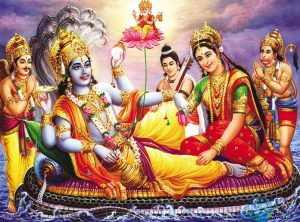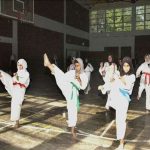Ashada Masam is the 4th month in the Hindu calendar, which started on July 13th and end on 11th August. Ashadam is considered as an inauspicious month for any shubhakaryam such as marriage, Upanayanam, Gruhapravesham, engagements. In fact in South India there is a tradition wherein newly weds are separated with girl being sent to mother’s place .
Though Ashadam is considered inauspicious there are many festivals that are celebrated during this month, India’s biggest festival Jagannath Ratha Yatra starts on the Padyami of Ashada. Festivals during the month of Ashadam are –
Dakshinayana punyakalam
The inauspicious tag attached to Ashada month is due to the fact that the Dakshinayana Punnjaykalam or Karak Sankranti begins in this month. The sun changes its courses in this month and next six months is the night time of Devas (gods), which ends with Makar Sankranti.
Dakshinayana Punyakalam or Karka Sankraman or Karkataka Sankranti marks the southern transit of the Sun. The Uttarayana period began on January 14 or 15 ends with Dakshinayana Punyakalam. The Dakshinayanam period will end on Makar Sankranti or Uttarayana day. As per Hinduism, one year for humans is equivalent to a time span of one day and one night for the gods. Humans pass through uttarayanam, the gods pass through only one day. Similarly, when humans pass through dakshinayanam, the gods pass through merely one night. When the Lord is in yoga-nidra it is befitting to set aside mundane activities and participate in special religious pursuits. Major Hindu festivals occur during Dakshinayanam.

Gayathri Devi Navratri
Ashada Navrati is called by various names across the country – Gupt Navratra, Gayathri Devi Navratri and Maa Shakambari Navratra is oberve with lot fervor across the country.
Ashada Navratri is very important festival for those who worship Goddess Varahi, one of the Saptha Matrukas (Seven Mothers) who helped Devi in slaying the demons Shumbha and Nishumbha.
During Ashad Navratri, Goddess Gayathri Devi is worshipped as the main deity in her Navdurga forms (9 avatars). In some regions Maa Shakambari Devi is worshipped for nine festive nights with utmost devotion. In Viajayawada Kanaka Durga Temple, Badrakali Temple in Warangal (Andhra Pradesh) Shakambari Navratras are celebrated jubilantly. Ashada Navratri are celebrated as Guhya Navratri in Himachal Pradesh.
All the rituals and customs followed during Ashada Navratri are similar to that of Durga Navratri festival.

Jagannatha Ratha Yatra
The chariot of Lord Jagannath, known as ‘Nandighose’, is 23 cubits high and has 18 wheels. The chariot of Balabhadra, which is 22 cubits in height and has 16 wheels, is named ‘Taladwaja’. ‘Devadalan’ the chariot of Subhadra, is 21 cubits in height and has 14 wheels.
The Car Festival is held on the 2nd day of the bright fortnight of Asadha (June-July). It continues for 9-days from the 2nd day of the bright fortnight of Asadha to 10th day of the bright fortnight. The 2nd day is known as Sri Gundicha, when the deities are brought from the main temple in a procession called Pahandi to the cars and are pulled down to the Gundicha Temple by the devotees. On the 10th day the devotees are returned to the main
temple sitting on their respective cars being taken in a procession from Gundicha Temple which is called Bahuda. The cars of the deities in which they travel are designed in a specific style. Every year new logs of wood are procured from Daspalla forest for the construction of cars.
The construction starts from the 3rd day of the bright fortnight of Baisakha (May) and are completed a day before the car festival. They are built by a specific skilled group of carpenters, who are well trained as per their family tradition
on Asadha Sukla Dwitiya i.e. the second day of bright fortnight of Asadha (June-July) every year.This festival is also known as Sri Gundicha yatra and Ghosha yatra. As per the prevailing tradition,Gundich was the Rani (queen) of Raja Indradyumna, the legendary builder of the first temple. She had initiated this grand festival.

Bradrakali Ammavari Shakambari Utsavalu, Warangal
Shakambari Navratri, nine festive nights dedicated to Shakambari devi, is observed in Ashada masam at Bhadrakali Temple in Hanamkonda (Warangal), Andhra Pradesh. Bhadrakali Ammavaru at Hanamkonda is a Shakti Peetha, dedicated to Mother Goddess. Goddess Bhadrakali is the ferocious form of Goddess Shakti. Bhadra kali is the consort of Lord Veerabhadreshwara Swamy. Bhadrakali is worshipped as the main deity in Telangana region of Andhra Pradesh.

Kanaka Durga Shakambari Utsavalu, Vijayawada
It is a three day Festival dedicated to Shakambari devi , is observed in Ashada masam at indrakiladri (vijayawada). The goddess is decorate with vegetables and fruits.It is so colourful to see the goddess in this celebration. Aarati is famous at this movement.About 3 Lakh people visit the goddess at this time.Here Vigneswara Poja,VastuHomam,Akandajyothi Ankurarohana performed on this three days.

Ashada Ekadasi in Pandaripura
It is a very special day in Pandaripura (State of Maharashtra). The Town is filled with crores of devotees on this day. The Sants from nearby villages, holding a ‘jhanda’ (flag) begin their journey towards Pandaripura, by foot, a month early. All through the way they sing and dance the Praise of Lord Panduranga. Namdev (the devotee of Lord Panduranga) asked Panduranga, “Panduranga! How will I or many others have Your darshan in such huge crowd?” Panduranga replied, “Don’t worry. I will stand atop the temple tower and give darshan!” Here one will find people come in simple clothing but filled with devotion for Panduranga. They embrace Panduranga with deep love. ‘Mooda bhakti’ (blind devotion/faith without any intellect working of the mind). All of them sing and dance around without any shyness/embarrassment.

Bonalu
Opening of the Bonalu festival is marked with the Kalasha sthapana at the temple site. The Kalasa Stapana servers as indication to the devotees for commencement of the celebration of the festival. The Bonalu festival is mainly celebrated by women.
Bonalu Jathara is the annual festival celebrated at Secunderabad, Andhra Pradesh state. This festival is celebrated famous ujjaini Mahankali temple of Secunderabad. Festival is celebrated in Ashada masam. It is done on sundays.

Guru Poornima
It is very important festival in Shirdi village. Guru Pournima (“ Pournima means full-moon”) is the one which disciples and devotees honour and felicitate their guru and seek his or her special blessing. Although it is of great importance in Shirdi, perhaps because it is the only festival which Baba asked us to celebrate.
Once, in 1908, Tatyasaheb Noolkar came to Shirdi and stayed in Chavadi. One day Baba told Madhavrao to tell him to worship that post (pillar). The post Baba showed was near the Dhuni and Baba used to lean on it. That was the day when he was glad to have chance to worship at least the post in Masjid.Then Madhavrao Deshpande went into the Masjid. Baba told him to worship the same post along with Noolkar. But Madhavrao refused and insead requested to allow him to worship Baba himself. At last Baba gave the permission.
Dadasaheb Kelkar was unaware of this Puja. Tatya Kote Patil was called from the farm. People gathered the ‘Puja’ material. Dhoti was brought and people put on Dhoti to Baba, and worshiped him. Baba had no use of clothes but he gave permission in order to start the routine of Vyas puja. Thus this Puja was started at Baba’s time and now has taken form of Festival lasting for three days.
These festivals are celebrated with great passion, verve and he artfulness. There is a programme of puja, music (bhajan) public parayana (reading of scriptures and devotional texts) and exuberant processions with the palanquin and the Rath (cart). The Samadhi Mandir remains open all night during one of these days with Dwarkamai being open the previous night and there are all night bhajan and qawali sessions at various locations in the village.Every Thursday and on each festival, a Palakhi with Baba’s photo is taken out from the temple.

Vyas Purnima
It is popularly known as Vyas Purnima after Sage Vyasa. Sage Vyasa is the son of Parashara muni and Satyavathi (daughter of a fisherman). He was born in on an island in the river Yamuna on the purnima in the month of Ashada. Sage Vyasa is the greatest editor and compiler of holy texts in Hinduism. Sage Vyasa is considered the Adi Guru or the first Guru in Hinduism. Sage Vyasa is called Veda Vyasa – or the Compiler of the Vedas, he compiled the Vedas into four parts – the Rig, Yajur, Sama and Atharva Veda. He authored epic Mahabharatam and Srimad Bhagavtham. He wrote the Puranas so that the common people could also benefit from the knowledge of the Vedas – he conveyed the same spiritual principles through the medium of stories and parables. He is also the author of the Brahma Sutras – the quintessence of Vedanta.
Vyasa Poornima is popularly known as Guru Poornima. The day is dedicated to Guru and he/she is honored and given due respect

Kokila Vrat
Kokila Vrat is dedicated to Maa Sati and Lord Shiva. It is observed on the day of Ashadha Purnima. The ritual is celebrated by women. Goddess Parvati is worshipped in the form of a cuckoo bird, Kokila. Kokila Vrat is observed mainly in Northern India and some parts of the western and southern India. Kokila Vrat is celebrated from Ashadha Shukla Purnima till Shravan Shukla Purnima.
Women who observe this Vrat and celebrate this auspicious day will be Akhand Saubhagyavati and never lose their husband to death. It is also believed that devotees who observe Kokila vrat bestowed with prosperity, good offsprings, fortune, health, and wealth. After the death, she goes to the abode of Maa Parvati. Another belief says worshiping a cuckoo idol made from clay on Kokila Vrat helps to get a nice husband. Unmarried girls observe Kokila vrat to get rid of the obstacles in the way of their marriage. Kokila vrat removes the dosha such as the Bhaumadosh. Married women can earn the virtue of happy married life and long life of their husband.

Toli Ekadasi
It is the first Festival in Andhra Pradesh .It is celebrated behalf of both Siva and Vishnu. In this time Abishekam and fasting is very important. People offered a Prasadam called as Pellapindi in Telugu a combination of popcorn and Jaggery for lord Siva. People do Jagaram (Night with out sleep) on this day by Praying God.
Chaturmaasam
The Chaturmaasam is called Lord Vishnu’s Yoginidra. The Vishnu after during the battle he slept on SheshaPanupu for four months.On this all God’s and People Pray the God Vishnu and do Fasting.On Ashada Ekadasi LordVishu will sleep and wokeup at Kartika Ekadasi.
Most of the important festivals in Hinduism take place during this period. The first month in Chaturmaasam, Shravana maasam is dedicated to Lord Shiva, especially the Mondays. The next month is Bhadrapada, the month of festivals including the Ganesh Chaturthi and Krishna Ashtami. Then comes Ashwayuja month and the important festivals include, Durga Puja, Navratri, Diwali etc. Finally, Kartika maasam, Diwali celebrations end in this month, Hindus also observe different vows and fasting during this period.
Chaturmaasa Vratam
Chaturmaasam Vratam is a four months Vratam . In this Vratam all the sages and Pitadhipatis will take permenant shelter for this four months .They will not change their shelter even an hour. All this Months they will do pujas and Bhagvathgita Parayanam .It will starts at Ashada Ekadasi and ends with Kartika Ekadasi.

Chukkala Amvasya
The significance of Amavasya in Hindu culture is paramount. A ‘No Moon Day’, as it is also known as, occurs once every Hindu month. It is considered as a highly auspicious day to perform Pitru Tarpan or religious rituals for the forefathers or deceased ancestors. Ashadha Amavasya is observed all across India with each part having its own rituals and traditions. This day also marks the commencement of Shravan month.
Must read All You Need to Know About Puri Jagannath ‘Rath Yatra’
Must read Tirumala Temple to be closed for 9-days for devotees









